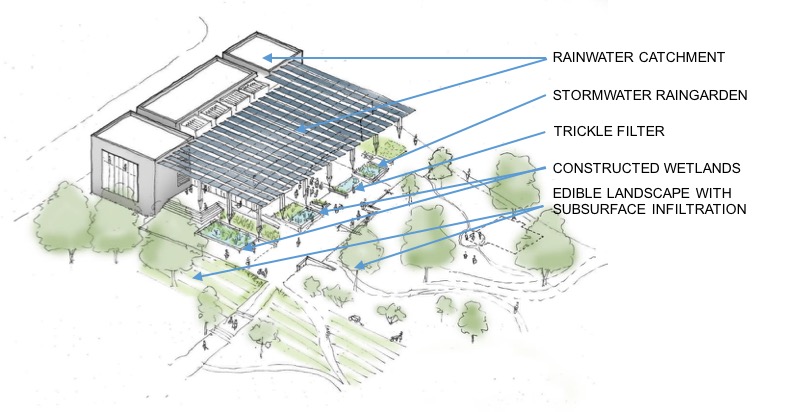Rainwater and Greywater Treatment Equipment
Achieving net positive water is one of the major imperatives of Living Building Challenge 3.1 certification. The Kendeda Building for Innovative Sustainable Design will collect – and appropriately treat – the water that it collects on site in order to provide the water needed for irrigation, potable water (i.e. safe to drink), and the small amount of water needed for the composting toilettes.
To achieve net positive water, the following strategies are planned to collect and recycle both rainwater and greywater (waste water from sinks and showers) on site.
Harvest and treat rooftop rainwater to supply all potable demands for the building.
- Rainwater from approximately 18,000 SF of rooftop will be filtered and disinfected. A 50,000 gallon cistern stores water to overcome drought and provide water resiliency.
- The cistern system harvests approximately 41% of the annual rooftop runoff; the balance is managed on site.
Manage waste water on site by using a greywater treatment system and composting toilets.
- Greywater and condensate will be used to supply the majority of irrigation demand on the site. Any makeup needed can be drawn from the cistern provided that water is available.
- Finished compost and compost tea (leachate) will be periodically removed and used onsite, on campus, or in a regional facility that produces beneficial byproducts (compost, fertilizer).
Provide onsite filtration of stormwater.
- Overflows from the rainwater and condensate systems will join stormwater management systems on the site.
- Approximately 59% of the annual rooftop runoff will overflow from the cistern to onsite stormwater systems.
